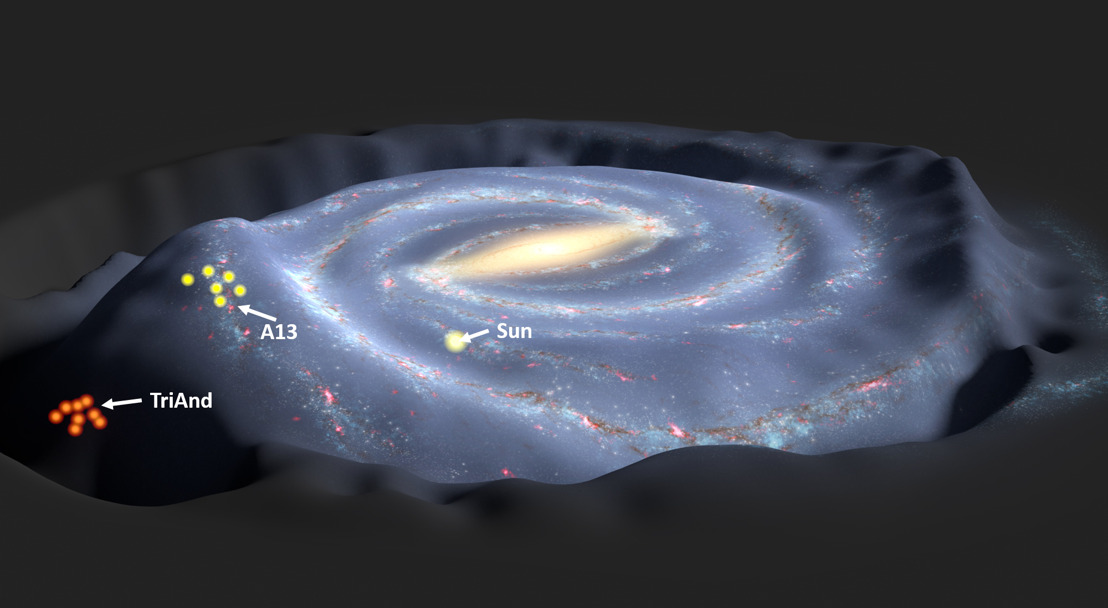New research sheds light on Milky Way’s turbulent past
Stars around our galaxy previously thought to be from merged dwarf galaxies are likely to have once been part of the Milky Way before being pulled away by an invading satellite galaxy, a new study involving The Australian National University (ANU) has found.
The researchers found the chemical composition of two outlying groups of stars, A13 and Triangulum-Andromeda, which are about 14,000 light years above and below the plane of the Milky Way, closely matched the stars in our galaxy.
Co-researcher Dr Luca Casagrande from ANU said the similarity provided compelling evidence that the remote groups of stars originated from within our galaxy.
“We think these stars were evicted through a tidal interaction of the Milky Way and a dwarf galaxy,” said Dr Casagrande, an ARC Future Fellow at the Research School of Astronomy and Astrophysics and the ARC Centre of Excellence for All Sky Astrophysics in 3D (ASTRO 3D) at ANU.
Tidal interactions between galaxies involve the gravitational field of each galaxy distorting the other – such interactions can change, sometimes dramatically, the form and structure of the galaxies involved.
An observable effect of tidal interactions between Earth and the Moon are the cycle of ocean tides on Earth.
“These findings are very exciting, as they indicate that the Milky Way Galaxy's disk as a whole can oscillate because of tidal interaction, and its dynamics are significantly more complex than previously thought.”
Dr Casagrande measured the temperature of the stars involved in the study, which enabled the team’s analysis of stellar distances and chemical compositions.
He used the infrared flux method, a technique regarded as one of the most reliable to measure temperature in stars.
ANU and research institutions in Germany, the United States, Spain, the United Kingdom and South Korea supported the study, which was led the Max Planck Institute for Astronomy in Germany.

